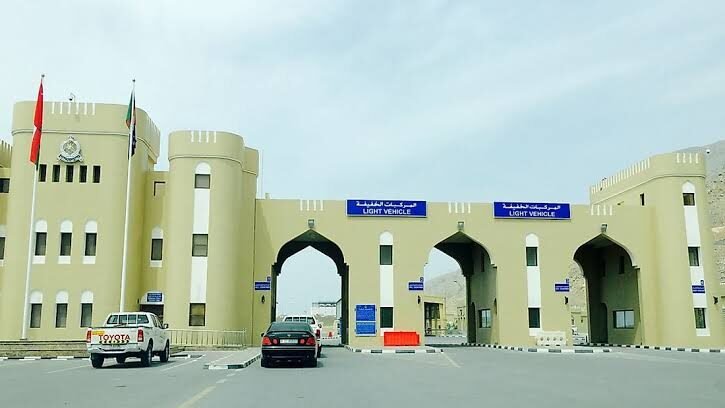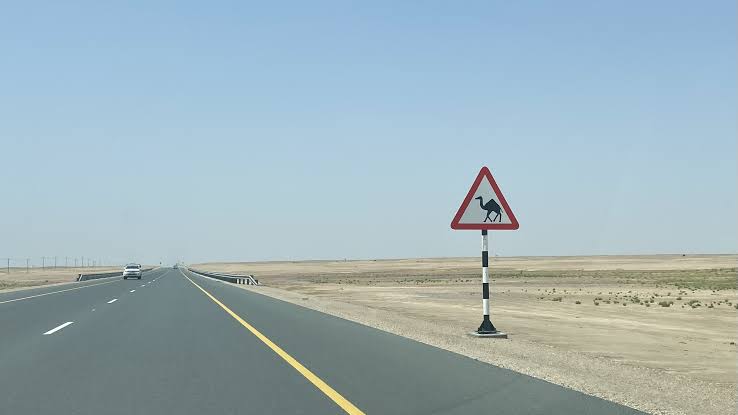UAE-Oman Border Crossing: A Comprehensive Guide for Travelers
UAE-Oman border crossing is a gateway to cultural exchanges, scenic road trips, and economic ties between the two neighboring countries. Whether you’re a resident planning a weekend getaway, a tourist exploring the Arabian Peninsula, or a business traveler, understanding the procedures and requirements for crossing the border is essential.
This guide provides all the information you need to make your UAE-Oman border crossing experience seamless, including entry requirements, key border checkpoints, and tips for hassle-free travel.

Significance of the UAE-Oman Border
The border between the UAE and Oman spans hundreds of kilometers, connecting two nations with deep historical, cultural, and economic ties. The relationship between the UAE and Oman fosters regional trade, tourism, and cooperation, making the border crossings vital for both countries.
From the majestic Hajar Mountains to the coastal beauty of the Arabian Sea, traveling between the UAE and Oman offers a unique opportunity to explore diverse landscapes and cultural experiences.

Key Border Checkpoints
Several border crossings connect the UAE and Oman, each catering to different regions and routes. Below are the main checkpoints frequently used by travelers:
- Hatta/Al Wajajah Border
- Popular for road trips and a scenic drive from Dubai to Oman.
- Offers efficient services for tourists and residents.
- Al Ain/Buraimi Border
- A convenient crossing for those traveling from Abu Dhabi or Al Ain.
- Ideal for accessing Oman’s Al Buraimi Governorate.
- Khatm Al Shikla (Al Ain)
- Mainly used for residents of Al Ain and nearby areas.
- Provides a quick and less crowded option.
- Kalba/Tibat Border
- Located near Fujairah, this crossing is perfect for travelers heading to Oman’s Musandam Peninsula.
- Known for its proximity to Oman’s coastal attractions.
- Mezyad/Hafeet Border
- Another Al Ain-based crossing, frequently used for goods transport and residents traveling to central Oman.
Documents Required for UAE-Oman Border Crossing
To ensure a smooth crossing, travelers must have the following documents ready:
- Valid Passport: A passport with at least six months’ validity is mandatory for entry into Oman.
- Visa: Depending on your nationality, you may require a visa for Oman. GCC nationals are usually exempt, while residents and tourists can apply for eVisas online.
- Vehicle Documents (if driving):
- A valid UAE driver’s license.
- Vehicle registration card (mulkiya).
- Oman insurance coverage for your car (available at the border).
Entry Visa Requirements
Oman offers various visa options depending on the purpose and duration of your visit:
- Visa-Free Entry for GCC Nationals
Citizens of GCC countries, including UAE nationals, can enter Oman without a visa for leisure or business purposes. - Tourist eVisa
Travelers can apply for an eVisa online before their trip. The eVisa process is straightforward, and approval is typically quick. - Visa on Arrival
In some cases, visitors can obtain a visa on arrival at the border checkpoint. However, it’s advisable to check eligibility and requirements in advance. - Resident Entry Permits
UAE residents with certain professional designations may qualify for a visa exemption or simplified entry process.
Tips for a Smooth Border Crossing
To make your UAE-Oman border crossing hassle-free, follow these tips:
- Check Border Timings
Border crossings operate at specific hours, so confirm the timings of your chosen checkpoint. Most crossings are open daily, with extended hours during peak travel seasons. - Prepare Your Documents
Ensure all required documents, including your passport, visa, and vehicle paperwork, are readily available. Double-check for validity and accuracy. - Purchase Vehicle Insurance
If driving, you’ll need Oman-specific insurance for your vehicle. This can be arranged at the border, but purchasing it in advance can save time. - Avoid Peak Hours
Border checkpoints can get crowded during weekends, holidays, and peak travel seasons. Plan your trip during off-peak hours to minimize wait times. - Carry Sufficient Cash
While most transactions are digital, having cash in local currencies (UAE Dirhams and Omani Rials) can be helpful for minor fees or purchases. - Familiarize Yourself with Customs Rules
Be aware of customs regulations for both countries, particularly regarding prohibited items, duty-free allowances, and the transport of goods.
Scenic Routes and Destinations
Traveling between the UAE and Oman offers access to stunning landscapes and attractions. Here are some must-visit destinations along popular routes:
- Hatta Dam (UAE)
A picturesque stop before crossing into Oman, Hatta Dam is ideal for kayaking and enjoying nature. - Musandam Peninsula (Oman)
Known as the “Norway of Arabia,” Musandam offers breathtaking fjords, dolphin-watching tours, and crystal-clear waters. - Jebel Hafeet (UAE/Oman Border)
A towering mountain offering panoramic views and a thrilling drive along its winding roads. - Nizwa Fort (Oman)
Explore Omani heritage and architecture at this iconic fort in Nizwa, a short drive from the Al Ain/Buraimi border. - Salalah (Oman)
A destination known for its lush greenery, waterfalls, and unique Khareef (monsoon) season, accessible from central Oman borders.
Border Crossing for Businesses and Trade
The UAE-Oman border is not just a travel hub but also a critical point for trade and commerce. Businesses rely on efficient border services for transporting goods, fostering economic ties, and promoting regional growth.
- Streamlined Goods Transport:
Dedicated lanes and checkpoints facilitate the smooth movement of goods between the two countries. - Customs Cooperation:
Both nations work together to ensure compliance with trade regulations while minimizing delays.
Future Enhancements to Border Services
To accommodate growing travel and trade demand, the UAE and Oman continuously invest in improving border infrastructure and services:
- Digital Processes
Online visa applications, automated customs clearance, and digital payment systems enhance efficiency and convenience. - Upgraded Facilities
Modern amenities, expanded parking, and improved road networks make border crossings more traveler-friendly. - Increased Collaboration
Joint initiatives between the UAE and Oman aim to streamline cross-border processes and strengthen bilateral relations.
Conclusion
The UAE-Oman border crossing serves as a vital link between two dynamic nations, offering opportunities for travel, trade, and cultural exchange. By understanding the procedures, requirements, and travel tips outlined in this guide, you can ensure a smooth and enjoyable crossing experience.
Whether you’re embarking on a road trip, conducting business, or exploring the rich heritage of Oman and the UAE, the border crossing is a gateway to unforgettable experiences and strengthened connections between these two remarkable countries.
The UAE-Oman border crossing is a gateway to cultural exchanges, scenic road trips, and economic ties between the two neighboring countries. Whether you’re a resident planning a weekend getaway, a tourist exploring the Arabian Peninsula, or a business traveler, understanding the procedures and requirements for crossing the border is essential.
This guide provides all the information you need to make your UAE-Oman border crossing experience seamless, including entry requirements, key border checkpoints, and tips for hassle-free travel.
Significance of the UAE-Oman Border
The border between the UAE and Oman spans hundreds of kilometers, connecting two nations with deep historical, cultural, and economic ties. The relationship between the UAE and Oman fosters regional trade, tourism, and cooperation, making the border crossings vital for both countries.
From the majestic Hajar Mountains to the coastal beauty of the Arabian Sea, traveling between the UAE and Oman offers a unique opportunity to explore diverse landscapes and cultural experiences.
Key Border Checkpoints
Several border crossings connect the UAE and Oman, each catering to different regions and routes. Below are the main checkpoints frequently used by travelers:
- Hatta/Al Wajajah Border
- Popular for road trips and a scenic drive from Dubai to Oman.
- Offers efficient services for tourists and residents.
- Al Ain/Buraimi Border
- A convenient crossing for those traveling from Abu Dhabi or Al Ain.
- Ideal for accessing Oman’s Al Buraimi Governorate.
- Khatm Al Shikla (Al Ain)
- Mainly used for residents of Al Ain and nearby areas.
- Provides a quick and less crowded option.
- Kalba/Tibat Border
- Located near Fujairah, this crossing is perfect for travelers heading to Oman’s Musandam Peninsula.
- Known for its proximity to Oman’s coastal attractions.
- Mezyad/Hafeet Border
- Another Al Ain-based crossing, frequently used for goods transport and residents traveling to central Oman.
Documents Required for UAE-Oman Border Crossing
To ensure a smooth crossing, travelers must have the following documents ready:
- Valid Passport: A passport with at least six months’ validity is mandatory for entry into Oman.
- Visa: Depending on your nationality, you may require a visa for Oman. GCC nationals are usually exempt, while residents and tourists can apply for eVisas online.
- Vehicle Documents (if driving):
- A valid UAE driver’s license.
- Vehicle registration card (mulkiya).
- Oman insurance coverage for your car (available at the border).
Entry Visa Requirements
Oman offers various visa options depending on the purpose and duration of your visit:
- Visa-Free Entry for GCC Nationals
Citizens of GCC countries, including UAE nationals, can enter Oman without a visa for leisure or business purposes. - Tourist eVisa
Travelers can apply for an eVisa online before their trip. The eVisa process is straightforward, and approval is typically quick. - Visa on Arrival
In some cases, visitors can obtain a visa on arrival at the border checkpoint. However, it’s advisable to check eligibility and requirements in advance. - Resident Entry Permits
UAE residents with certain professional designations may qualify for a visa exemption or simplified entry process.
Tips for a Smooth Border Crossing
To make your UAE-Oman border crossing hassle-free, follow these tips:
- Check Border Timings
Border crossings operate at specific hours, so confirm the timings of your chosen checkpoint. Most crossings are open daily, with extended hours during peak travel seasons. - Prepare Your Documents
Ensure all required documents, including your passport, visa, and vehicle paperwork, are readily available. Double-check for validity and accuracy. - Purchase Vehicle Insurance
If driving, you’ll need Oman-specific insurance for your vehicle. This can be arranged at the border, but purchasing it in advance can save time. - Avoid Peak Hours
Border checkpoints can get crowded during weekends, holidays, and peak travel seasons. Plan your trip during off-peak hours to minimize wait times. - Carry Sufficient Cash
While most transactions are digital, having cash in local currencies (UAE Dirhams and Omani Rials) can be helpful for minor fees or purchases. - Familiarize Yourself with Customs Rules
Be aware of customs regulations for both countries, particularly regarding prohibited items, duty-free allowances, and the transport of goods.
Scenic Routes and Destinations
Traveling between the UAE and Oman offers access to stunning landscapes and attractions. Here are some must-visit destinations along popular routes:
- Hatta Dam (UAE)
A picturesque stop before crossing into Oman, Hatta Dam is ideal for kayaking and enjoying nature. - Musandam Peninsula (Oman)
Known as the “Norway of Arabia,” Musandam offers breathtaking fjords, dolphin-watching tours, and crystal-clear waters. - Jebel Hafeet (UAE/Oman Border)
A towering mountain offering panoramic views and a thrilling drive along its winding roads. - Nizwa Fort (Oman)
Explore Omani heritage and architecture at this iconic fort in Nizwa, a short drive from the Al Ain/Buraimi border. - Salalah (Oman)
A destination known for its lush greenery, waterfalls, and unique Khareef (monsoon) season, accessible from central Oman borders.
Border Crossing for Businesses and Trade
The UAE-Oman border is not just a travel hub but also a critical point for trade and commerce. Businesses rely on efficient border services for transporting goods, fostering economic ties, and promoting regional growth.
- Streamlined Goods Transport:
Dedicated lanes and checkpoints facilitate the smooth movement of goods between the two countries. - Customs Cooperation:
Both nations work together to ensure compliance with trade regulations while minimizing delays.
Future Enhancements to Border Services
To accommodate growing travel and trade demand, the UAE and Oman continuously invest in improving border infrastructure and services:
- Digital Processes
Online visa applications, automated customs clearance, and digital payment systems enhance efficiency and convenience. - Upgraded Facilities
Modern amenities, expanded parking, and improved road networks make border crossings more traveler-friendly. - Increased Collaboration
Joint initiatives between the UAE and Oman aim to streamline cross-border processes and strengthen bilateral relations.
Conclusion
The UAE-Oman border crossing serves as a vital link between two dynamic nations, offering opportunities for travel, trade, and cultural exchange. By understanding the procedures, requirements, and travel tips outlined in this guide, you can ensure a smooth and enjoyable crossing experience.
Whether you’re embarking on a road trip, conducting business, or exploring the rich heritage of Oman and the UAE, the border crossing is a gateway to unforgettable experiences and strengthened connections between these two remarkable countries.
Do follow Uae stories for more Updates
School News UAE: Updates Shaping the Nation’s Education Landscape













